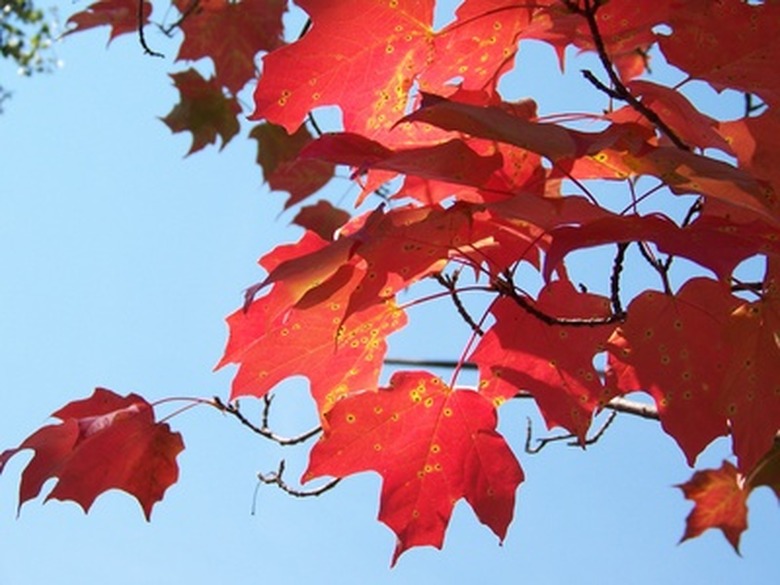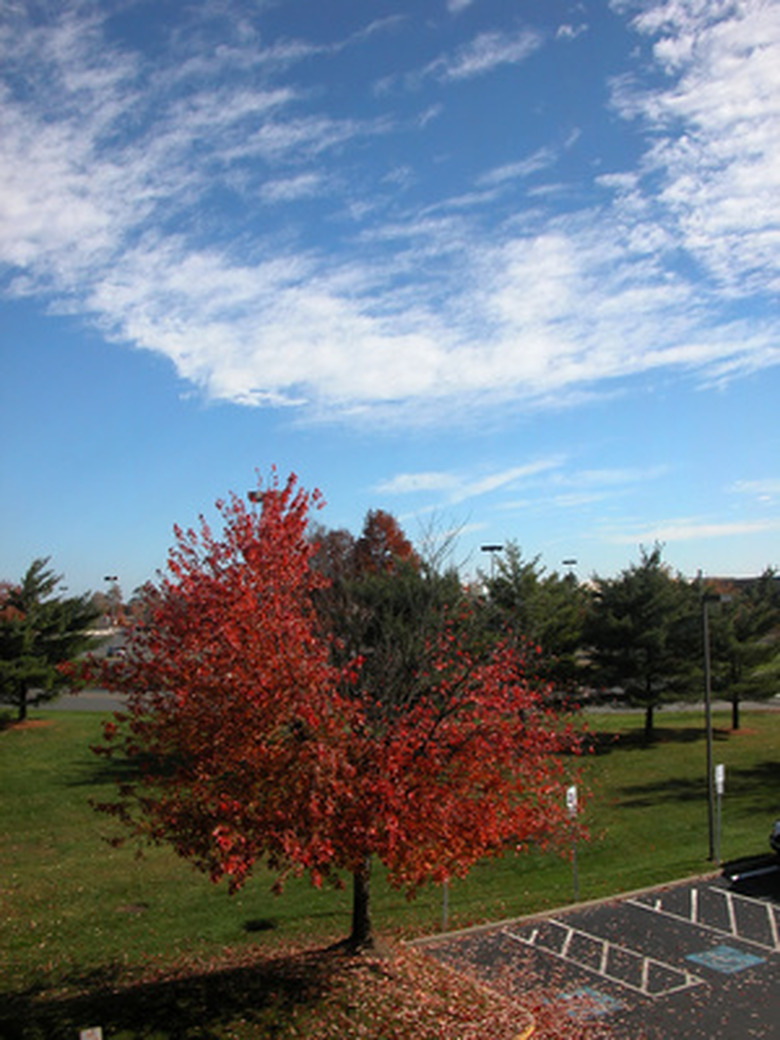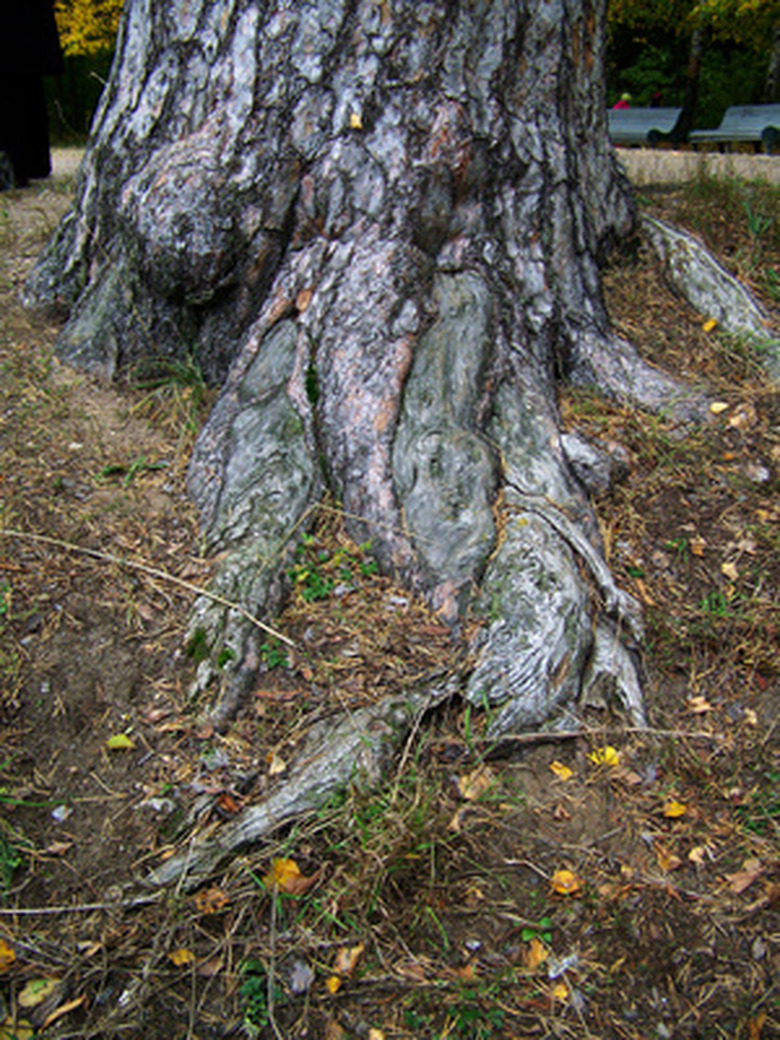Autumn Blaze Maple Tree Diseases
The aptly-named "Autumn Blaze" maple (Acer x fremanii) is a hybrid between the fast-growing silver maple (Acer saccharinum) and the showy red maple (Acer rubrum). The hybrid has the fast growth of silver maple without the silver maple's weak branch structure and inherited intense fall color from its red maple parent. Poplar Farms of Illinois introduced the autumn blaze maple in 1982 and homeowners embraced the new variety for the improved characteristics. However, certain diseases can affect any maple, including autumn blaze.
Anthracnose
Homeowners confuse anthracnose with scorch, as both problems create brown, dry leaves and can defoliate a tree. Drought and high winds cause scorch along leaf edges, but anthracnose discoloration occurs along the veins and in oddly-shaped blotches. The University of Rhode Island Horticulture Department warns that wet and cool spring weather encourages the spread of anthracnose spores. The USDA Forest Service suggests spraying a fungicide on newly-opened spring leaves, with two repeat treatments two weeks apart.
- The aptly-named "Autumn Blaze" maple (Acer x fremanii) is a hybrid between the fast-growing silver maple (Acer saccharinum) and the showy red maple (Acer rubrum).
- Homeowners confuse anthracnose with scorch, as both problems create brown, dry leaves and can defoliate a tree.
Verticillium Wilt
If branches abruptly wilt and die, verticillium wilt may be to blame. In a hybrid-like autumn blaze maple, the condition may not be severe and the only symptom may be a thin, slow-growing crown. In diseased branches, the wood under the maple's bark has olive or gray-green streaks. No cure exists for verticillium wilt, but Purdue University Extension suggests homeowners prune out diseased wood and properly fertilize a maple to delay the disease. A fungus in the soil causes verticillium wilt, so never remove a maple and replant another maple—the disease is still present.
Root Rot
Verticillium wilt is not the only suspect if an autumn blaze maple shows a thin crown. The University of Illinois Extension says armillaria fungus commonly infects maples, resulting in yellowing leaves, early leaf drop and weak trees. Thin, white sheets of the fungus are visible under the bark at the base of the maple and may smell like mushrooms. An autumn blaze maple takes years to die from root rot, slowly declining over each season. Like verticillium wilt, a fungus in the soil causes root rot and a diseased tree will not recover. Water maples during drought, avoid root damage, fertilize if necessary and ensure proper soil drainage. Again, do not replant a maple in diseased soil.
- If branches abruptly wilt and die, verticillium wilt may be to blame.
- A fungus in the soil causes verticillium wilt, so never remove a maple and replant another maple—the disease is still present.


